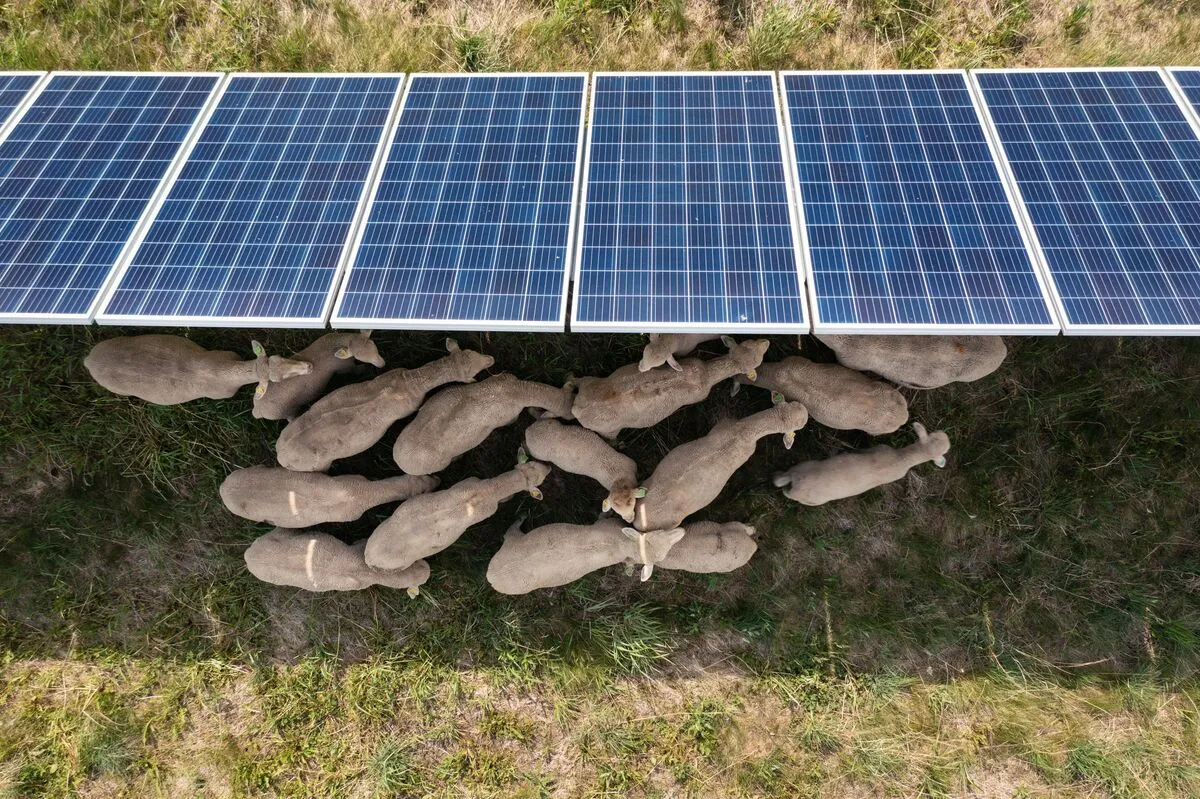- cross-posted to:
- usa@lemmy.ml
- cross-posted to:
- usa@lemmy.ml
In the right places, this can be incredibly reliable income if you’re renting your land for 30+ years, and doesn’t necessarily preclude certain types of farming on the same land. Sheep are very compatible with solar installations since they will naturally graze on vegetation that can affect the panels. Goats however are not compatible since they will eat electrical cables and jump on the panels!
I have wondered for quite some time why local farmers in my area aren’t pasturing sheep on solar panel land. I’m glad to see it’s happening somewhere at least
It works for wind, too. Farmers can get a few thousand dollars per turbine per year by leasing out relatively small sections of their property.
Where I live in Ontario, there seems to be quite a bit of solar going up. The article mentions that ideally, the panels would be deployed on land that is marginal from the standpoint of agriculture. I’m not sure how much that is the case? I get the impression that proximity to power corridors and transfer stations is the main driver of where the solar actually goes.
The article mentions concerns about food security if too much agricultural land is given over to solar. I seem to recall similar arguments being made about corn diverted to make ethanol, and can’t help but think solar would still be a better use for the land than ethanol production?
I wonder if they could design a solar farm that would be relatively easy to move? Then you could put your panels on fallow land and rotate them around every year. Just a thought.
Moving your installation will probably not be worth it simply for the labor effort. However there is also benefits by combining them with traditional crops, as they help to protect the crops from cold winds and the hot sun in summer.
I think solar panels are easy to move, the problem is the wiring.
Easier to move than, say, wind turbines, but there’s a lot involved to solar installations in the field. Often they have to have significant piles driven into the ground (or you’ve just made a big glass kite ready to blow away), and the individual panels are about as tall as a person and double sided glass (think about shower glass/slider door glass installation and how often you see videos of them exploding). Installation alone can take over a year for larger facilities. I’d imagine there could be some creative solutions to rotating solar with crops, but I generally agree with the other folks suggesting some form of agrovoltaics is more viable with the technology we have currently!
A bit of googling and I came across a company called solarfold that seems to make a pre-wired solar array that unfolds out of a standard shipping container across a pair of rails.
I meant more the wiring from the field to the grid.
Ah ok, that’s fair.
And of course, my county is trying to ban it outright because ‘we must preserve our rural character’.
Indiana is not very eager either.
I asked about installing heat pumps and got essentially a “now why would anyone go and do that”.
Obviously depends on local contractors and I’m sure they exist.
I asked about installing heat pumps and got essentially a “now why would anyone go and do that”.
Obviously depends on local contractors and I’m sure they exist.
A lot of tradespeople are idiots and have knowledge that is decades out of date (or learned from people whose knowledge is also out of date).
The same issue is happening in Australia, with them often advocating for gas heating and hot water, despite bans on home gas supplies being rolled out in some states.
How are solar panels going to bring horses back?





